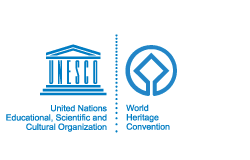The Belgian government has recently given its financial support to the 3rd phase of the project "Biodiversity Conservation in Regions of Armed Conflict: Conserving World Heritage sites in the Democratic Republic of Congo" with a total amount of 2 million Euros.
The five World Heritage Sites in the Democratic Republic of the Congo, National Parks Virunga, Kahuzi-Biega, Garamba and Salonga, and the Okapi Wildlife Reserve have been progressively inscribed on the List of World Heritage in Danger ever since the outbreak of the Great Lakes conflict in 1994 and because of its impact on the value for which the sites were inscribed on the World Heritage List. In 1999, the Institut Congolais pour la Conservation de la Nature (ICCN) along with a group of international NGOs, launched an appeal to the International Community to establish a Program for Emergencies designed to safeguard the unique biodiversity of the DRC's World Heritage sites.
In 2000, UNESCO initiated a Program for Emergencies for these sites that had been seriously deteriorated by the armed conflicts. The Phase I (2000-2004), which benefited from the financial support of the United Nations Foundation (UNF) and from the Belgian Government, enabled on the one hand a direct support to the sites that helped maintain conservation activities, and on the other hand the establishment of "diplomatic and conservation" activities designed to try and secure the political engagements in favor of the conservation of these sites of the parties engaged in the conflict.
Following an international conference of the conservation of World Heritage Sites that was held at UNESCO Headquarters, a second phase of the project (2005-2009) was launched with funds from the Belgian and Italian governments and from UNF. This second phase was essentially focused on the implementation of emergency action plans for the sites and on the creation of an information management system on protected areas for ICCN. The three sites that benefited from the support of the component financed by Belgium are the Kahuzi-Biega National Park, the Virunga National Park and the Okapi Wildlife Reserve.
The evaluation of Phase II highlighted the positive results that were mostly obtained despite the numerous restraints encountered. Major progress was made in order to make the sites more secure, even though the safety situation still requires constant vigilance. The local partners, along with civil, military and traditional authorities, and the external partners, with the United Nations Mission in the Democratic Republic of the Congo (MONUC) were strengthened and have already produced major results.
The goals of the 3rd Phase of the project converge with the continuation of the actions that have been led since 2000 and encourage emergency action plans in three sites that would bring together the conditions for the withdrawal of the sites from the List of World Heritage in Danger.
This engagement of the Belgian government reinforces the activities in favor of the DRC lead by the World Heritage Centre and its partners up until 2012.

